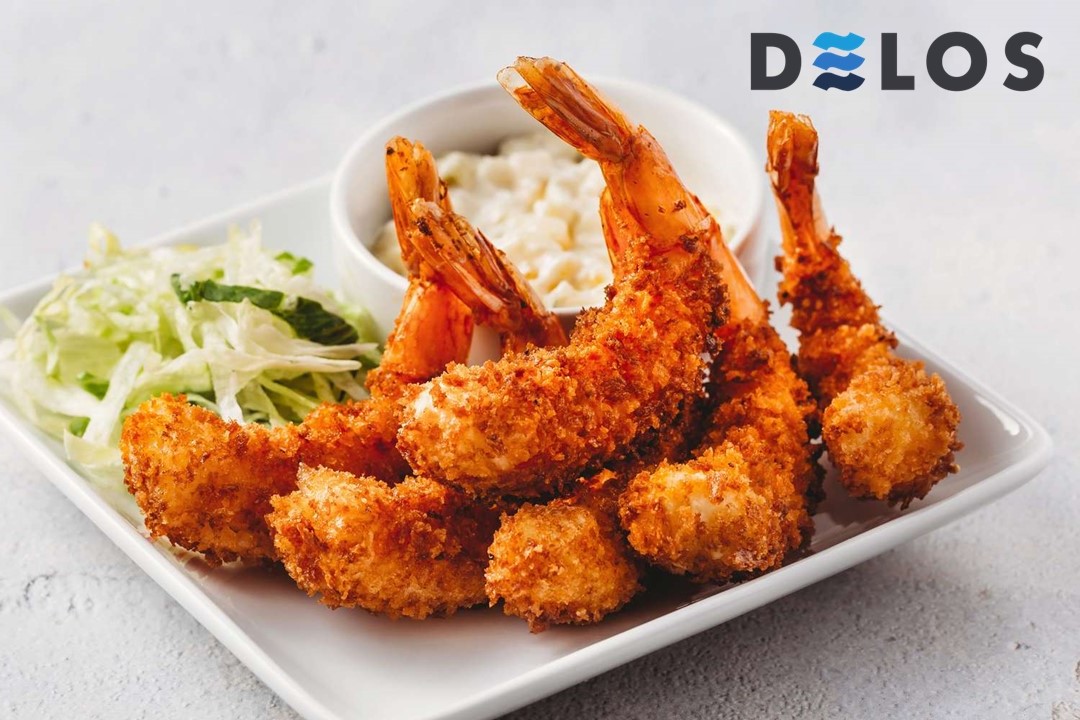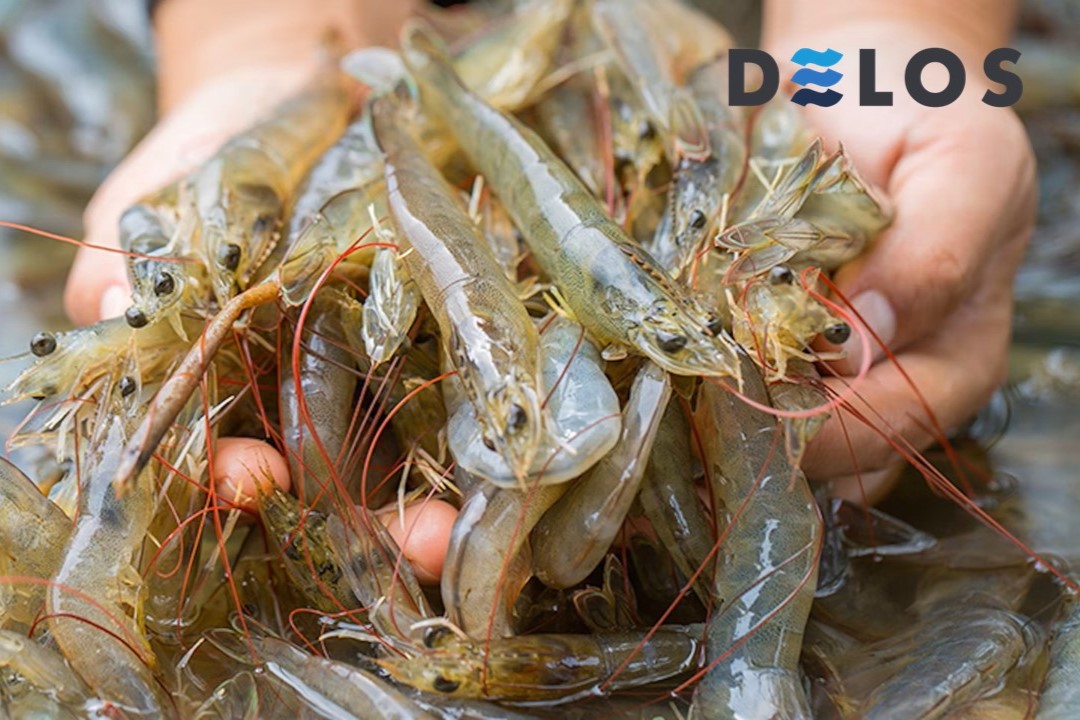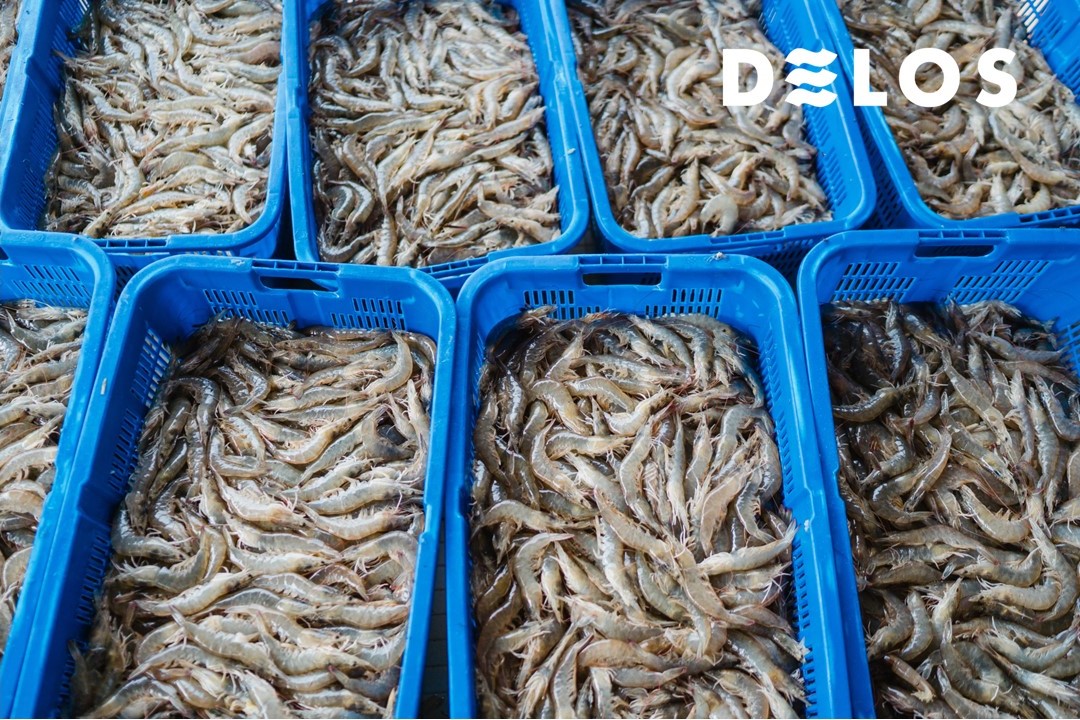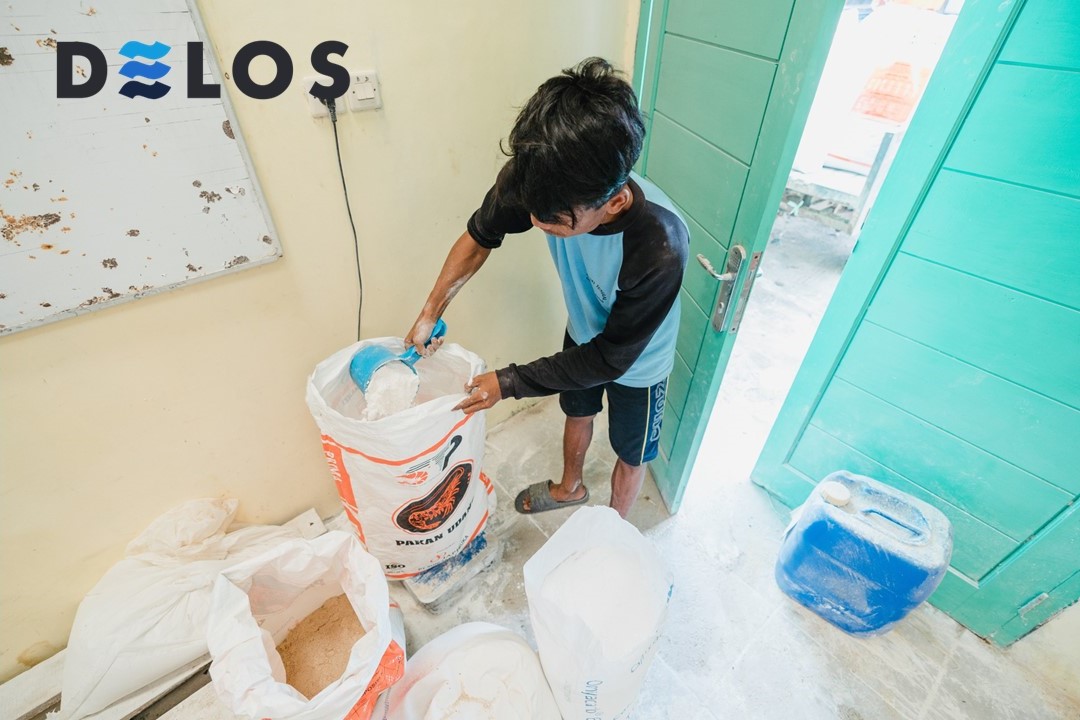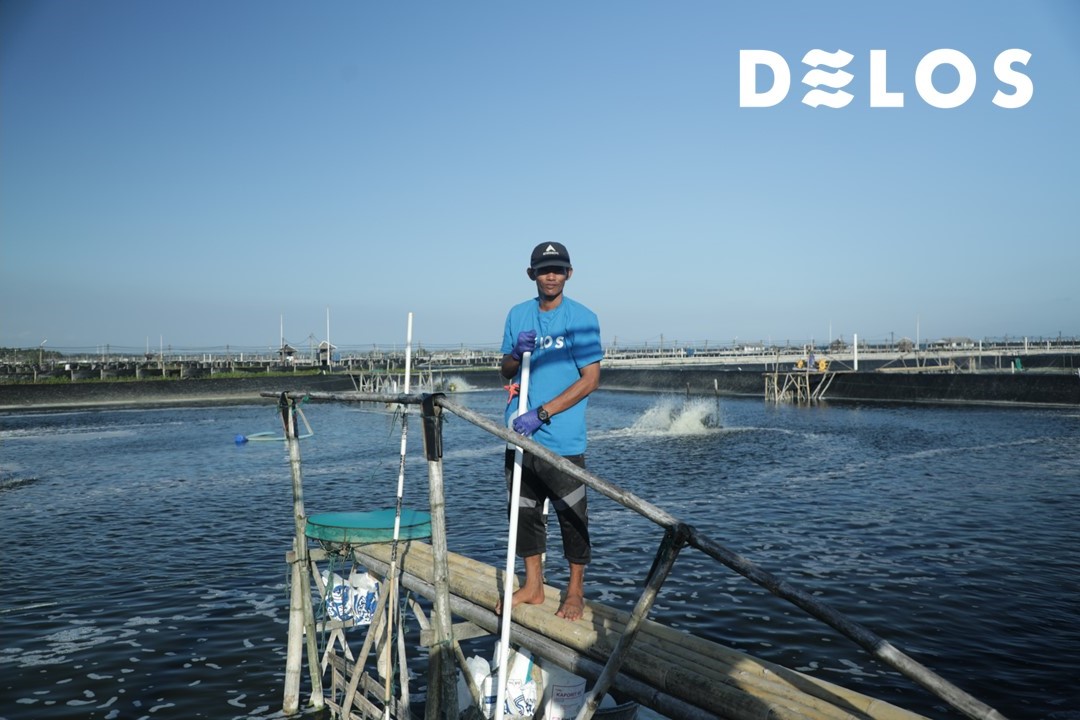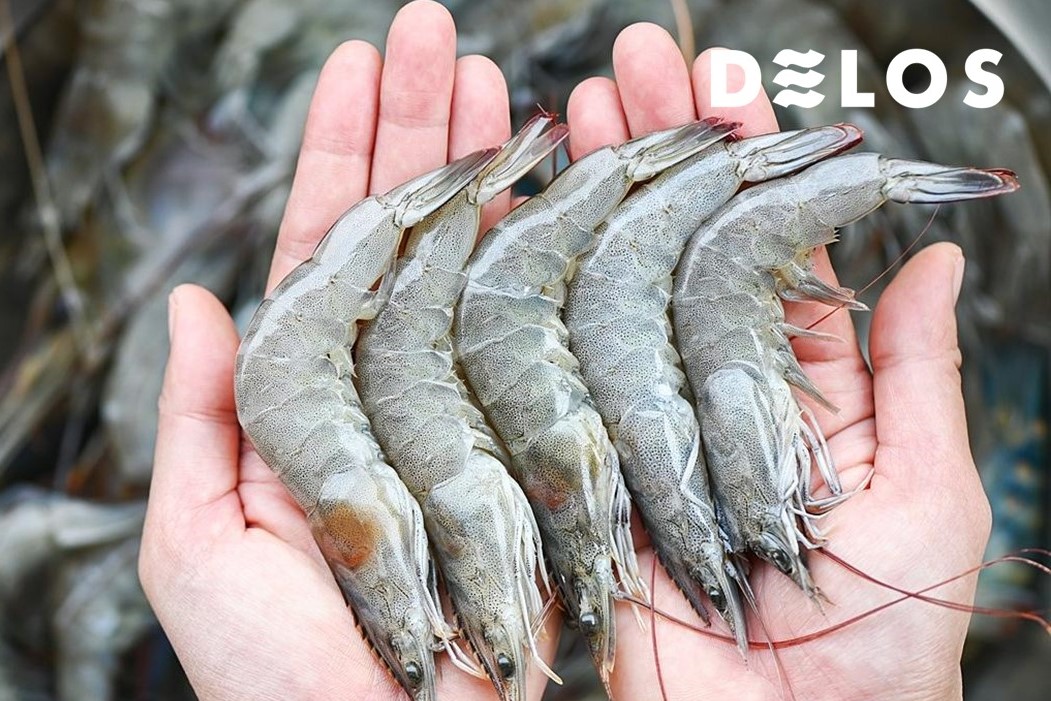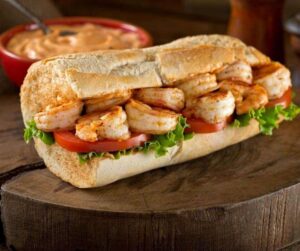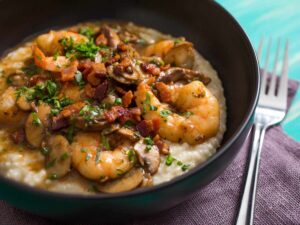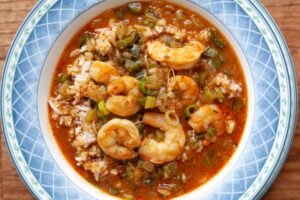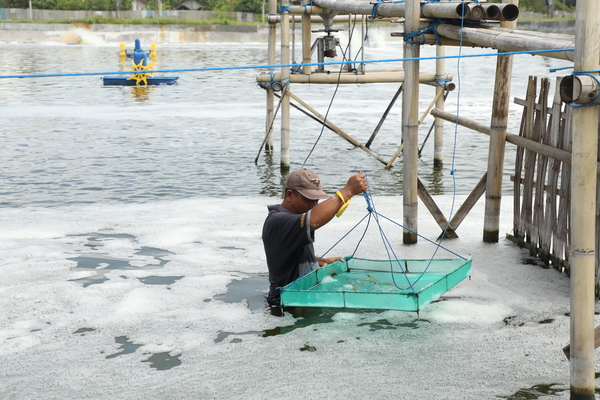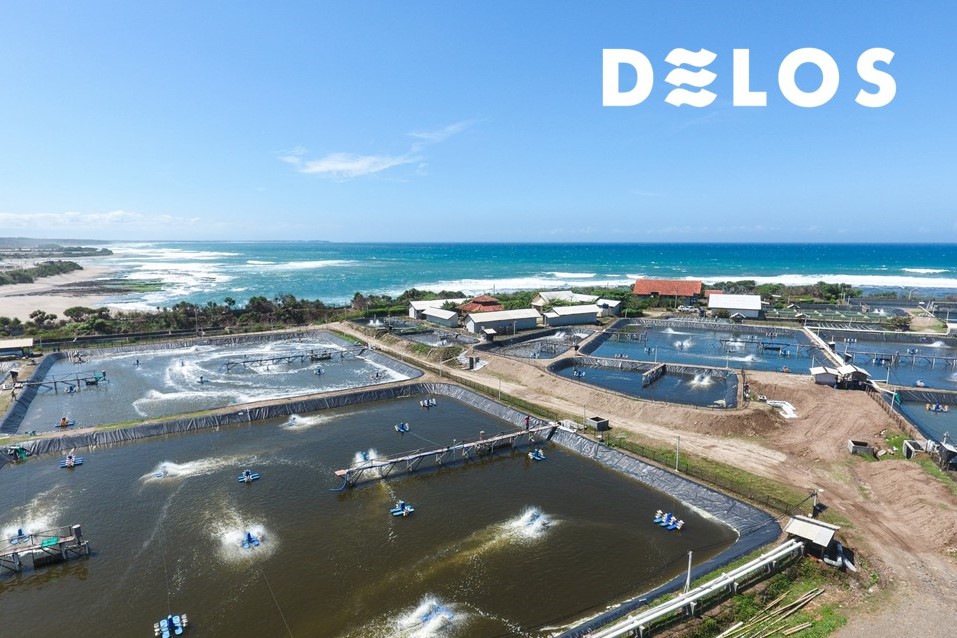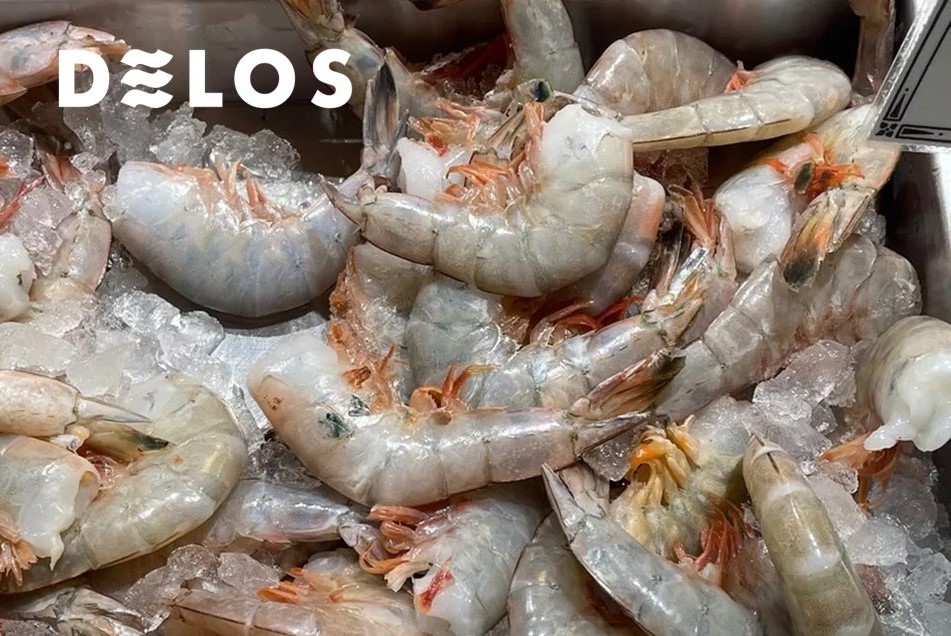6 Authentic Japanese Shrimp Recipes
Japanese cuisine is rich in flavours and holds a special place with its uniqueness and authentic taste. One of the main ingredients often found in Japanese cuisine is shrimp. Various recipes of Japanese shrimp dishes are top-rated worldwide, especially among seafood lovers.
If you’re eager to explore Japanese shrimp recipes in your kitchen, it’s not difficult at all. The key is to choose fresh shrimp and pay attention to the tips to ensure your dish is delicious. Check out the following recipes!
Also Read: 7 Benefits of Consuming Vannamei Shrimp for Health
Japanese Shrimp Recipes
1. Chawanmushi
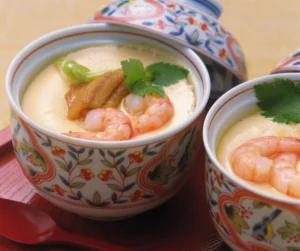
The first Japanese shrimp dish recipe is chawanmushi. In Japanese, chawanmushi means steamed in a teacup. This refers to its cooking process directly in the serving cup.
Chawanmushi is a type of steamed dish that consists of various fillings. From shrimp, shiitake mushrooms, and salmon eggs, to parsley, these ingredients make this Japanese dish rich in nutrients that are good for your health.
Making chawanmushi is relatively easy. Here is the procedure to cook it that you can try.
Ingredients:
- 3 large eggs
- 1 ½ cups of low-sodium chicken broth
- 1 ½ teaspoons of fish sauce
- ½ teaspoon of coarse salt
- ⅓ cup of celery leaves
- 1 stalk of spring onion, thinly sliced
- 6 fresh medium-sized shrimp, peeled and halved lengthwise
Instructions:
- Beat the eggs in a bowl with chicken broth, fish sauce, and salt. Divide celery leaves and spring onion evenly into 2 bowls.
- Pour the egg mixture evenly into the bowls through a fine wire mesh strainer. Wrap each bowl with plastic wrap (use rubber bands to strengthen the plastic if it does not stick to the sides of the bowl).
- Place both bowls into a steamer—cover and steam for about 15 minutes until the chawanmushi sets.
- Remove the chawanmushi from the steamer basket and unwrap the plastic cover. Let it sit for about 5 minutes.
- Meanwhile, arrange the shrimp in the steamer and cook until done for about 5 minutes.
- Sprinkle the shrimp evenly over the chawanmushi. Garnish with celery leaves and spring onion. Chawanmushi is ready to be served!
2. Ebi No Umani
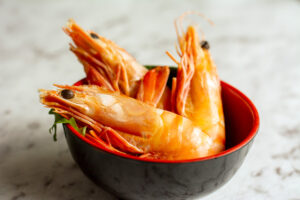
Ebi no umani is one of the favorite dishes during the New Year celebrations in Japan. This is because the Japanese believe that shrimp symbolizes longevity and luck.
Cooking ebi no umani is not difficult, and the ingredients used are easily available. Here is the method of cooking this typical Japanese shrimp dish.
Ingredients:
- 5 fresh shrimp, unpeeled
- ½ cup sake
- 1 tablespoon mirin
- ½ cup dashi
- 2 tablespoons soy sauce
Instructions:
- In a medium-sized saucepan, combine ½ cup sake, 2 tablespoons mirin, and ½ cup dashi. Bring to a boil.
- Once boiling, reduce the heat to low and add the shrimp to the sauce. Cook over low heat for 4-5 minutes.
- Once cooked, immediately transfer the shrimp to a container, saving the cooking liquid.
- Strain the cooking liquid using a coffee filter or fine mesh strainer.
- Cover and soak the shrimp in the liquid for several hours or overnight. Serve at room temperature.
3. Ebi Nigiri
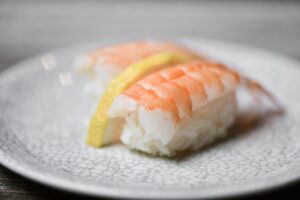
For sushi enthusiasts, ebi nigiri or sushi wrapped with shrimp is likely a familiar delight. Served with soy sauce and wasabi, this dish boasts a simple appearance but an extraordinary taste.
To prepare the Japanese shrimp dish ebi nigiri, follow these steps:
Ingredients:
- Large shrimp, as needed
- Bamboo skewers
- Ice cubes
- Japanese rice
Instructions:
- Remove the heads of the shrimp and insert a bamboo skewer through the middle, towards the tail.
- Bring water and vinegar to a boil, then add the skewered shrimp and cover the pot.
- Remove the shrimp and let them sit for 3 minutes.
- Peel the shrimp and set aside.
- Use the tip of a sharp knife to slit open the stomach from top to bottom, ensuring not to cut through the shrimp entirely. Gently open the shrimp and flatten.
- To make nigiri, mix water and rice vinegar to dip your fingers in to prevent sticking. Take a small ball of Japanese rice and gently shape it into a rectangular form.
- Place the rice onto the prepared shrimp and gently press to adhere well.
- Optionally, add a thinly sliced strip of nori and wrap it around the middle of the Ebi Nigiri to enhance its appearance.
- Serve with soy sauce, wasabi, and pickled ginger.
Also Read: 7 Types of Shrimp That are Favorites in Japanese Cuisine
4. Ankake Donburi
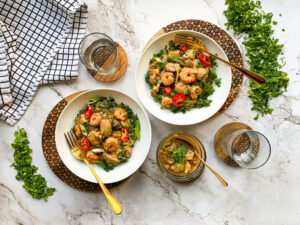
Ankake Donburi is a Japanese shrimp dish that is perfect for breakfast menus. The main ingredients of this dish are shrimp and vegetables cooked in a sweet Japanese sauce.
Curious about how to cook Ankake Donburi? Follow the steps below.
Ingredients:
- 227 grams boneless, skinless chicken thighs
- 170 grams large shrimp, peeled and cleaned
- Salt and pepper to taste
- 2 tablespoons sake for marinating
- 5 fresh shiitake mushrooms
- 1 small onion, peeled
- 200 grams snow peas
- 1 large carrot, peeled and thinly sliced
- 1 small zucchini, peeled and cut into approximately 2.5cm strips
- 3 tablespoons soy sauce
- 1 tablespoon sake
- 1 tablespoon mirin
- 1 tablespoon sugar
- ½ teaspoon salt
- 360 ml dashi stock
- 1 tablespoon cooking oil
- 2.5 cm fresh ginger, peeled and halved
- 3 cloves garlic, crushed
- 2 tablespoons potato starch or cornstarch mixed with 2 tablespoons cold water
- Warm rice for serving
Instructions:
- Cut the chicken into 2.5 cm cube pieces and clean the shrimp by removing the veins. Marinate the chicken and shrimp separately with a little sake, salt, and pepper.
- Clean the shiitake mushrooms and thinly slice them diagonally. Cut the onion into long pieces, then slice it into half-moons.
- Mix soy sauce, sake, mirin, sugar, and salt into the dashi stock, stir well and set aside.
- Heat oil in a pan. Once hot, add ginger, onion, and garlic, cook until fragrant. Then add chicken and shrimp, followed by shiitake mushrooms, snow peas, zucchini, and carrots. Sauté for 2 minutes.
- Add the dashi stock mixture. When it boils, add the mixture of potato starch or cornstarch that has been dissolved to thicken the sauce.
- Remove the ginger, green onion, and garlic. Serve ankake on top of warm rice in serving bowls.
- Enjoy Ankake Donburi with warm rice for a delicious and nutritious meal.
5. Renkon No Hasami Age
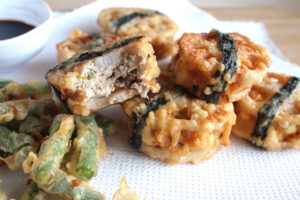
After the various Japanese shrimp dish recipes for the main course above, next is the recipe for Renkon No Hasami Age, which is a snack or appetizer. This food is made from lotus root that is sliced in the middle and filled with minced shrimp seasoned with spices.
Check out the complete recipe for Renkon No Hasami Age below!
Ingredients:
200 grams of lotus root
200 grams shrimp (raw)
3 leaves of green shiso (Japanese aromatic herb)
1 tablespoon egg white
Salt
Pepper
Wheat flour
Batter:
½ egg
250 ml ice water
½ tablespoon mirin
Salt
¼ glass of wheat flour
1 lemon
Vegetable oil for frying
Instructions:
- Peel and slice the lotus root that has been washed into slices about 5 mm thick. Soak in water with vinegar for about thirty minutes to remove bitterness, then dry.
- Chop the shiso leaves.
- Chop the shrimp and add shiso leaves, salt, and white egg. Mix well. (You can also use a blender.)
- Mix the ingredients for the batter with a little stirring.
- Heat oil in a medium saucepan to a temperature of 160° C.
- Place the shrimp mixture between two slices of lotus root that have been dusted with flour. Dip in the batter and fry in hot oil until golden brown.
- Serve on a plate with lemon slices and a little salt.
6. Ebi Furai
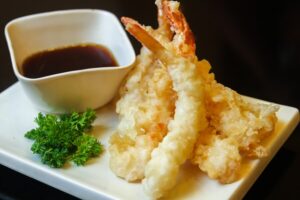
Ebi furai or fried shrimp is a favorite Japanese shrimp dish in restaurants because of its savory and crispy taste. Typically, this dish is served with mayo sauce or chili sauce.
Instead of buying ebi furai at Japanese restaurants, you can make it at home by following the steps below.
Ingredients:
- 10 shrimp
- 1 clove garlic, grated
- ½ teaspoon ground pepper
- 1 teaspoon salt
- 1 tablespoon lime juice
- 100 grams wheat flour
- 1 egg, beaten until foamy
- 150 grams coarse white bread crumbs / panko
- cooking oil
- 1 boiled egg, finely chopped
- 100 ml bottled mayonnaise
- 1 tablespoon finely chopped onion
- 1 tablespoon lemon / lime juice
- ¼ teaspoon ground pepper
- ½ teaspoon salt
- finely sliced cabbage
- thinly sliced tomatoes
Instructions:
- Peel the shrimp, but leave the tails intact. Place the shrimp with the back facing down on a cutting board.
- Score the bottom of the shrimp and press gently until the shrimp is straight.
- Mix the shrimp with garlic, lime juice, pepper, and salt until evenly distributed.
- Coat each shrimp evenly with flour.
- Dip each shrimp into the beaten egg, then coat with bread crumbs while gently pressing to adhere.
- If desired, the coating process can be repeated once more to get a thicker layer.
- Let the shrimp coated with bread crumbs dry slightly.
- Fry in hot oil in a sufficient amount over medium heat until golden brown, then remove and drain.
- Serve ebi furai with mayo sauce and other complements.
Also Read: 4 Popular and Delicious American Shrimp Recipes
Support Indonesian Shrimp Export with DELOS!
The Japanese shrimp recipes above are not only popular in Japan but also across the globe. If you ever have the chance to try these dishes firsthand in Japan, the shrimp served in the meals you order may very well be from Indonesia. Indonesia is indeed one of the largest shrimp exporters to Japan.
Let’s support the increase of Indonesian shrimp exports to the global market together with DELOS! DELOS, alongside Indonesian shrimp farmers, is committed to improving the quality of Indonesian shrimp and ensuring sustainable shrimp farming practices.
Join DELOS in supporting Indonesian shrimp exports. Contact us at contact@delosaqua.com or visit www.delosaqua.com for more information.

